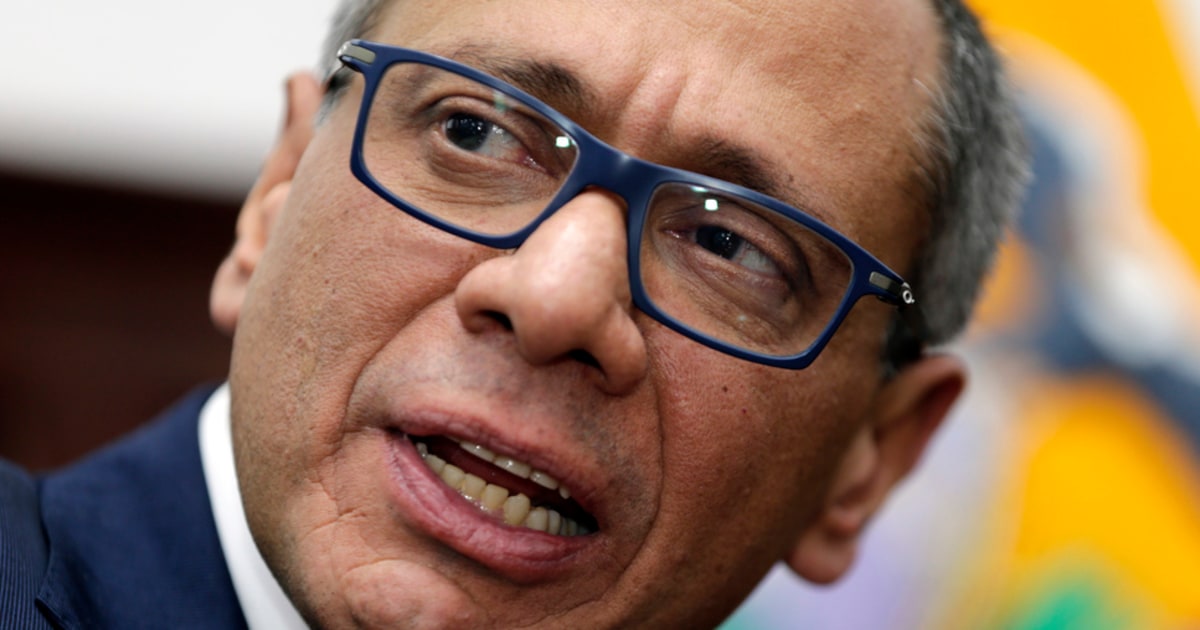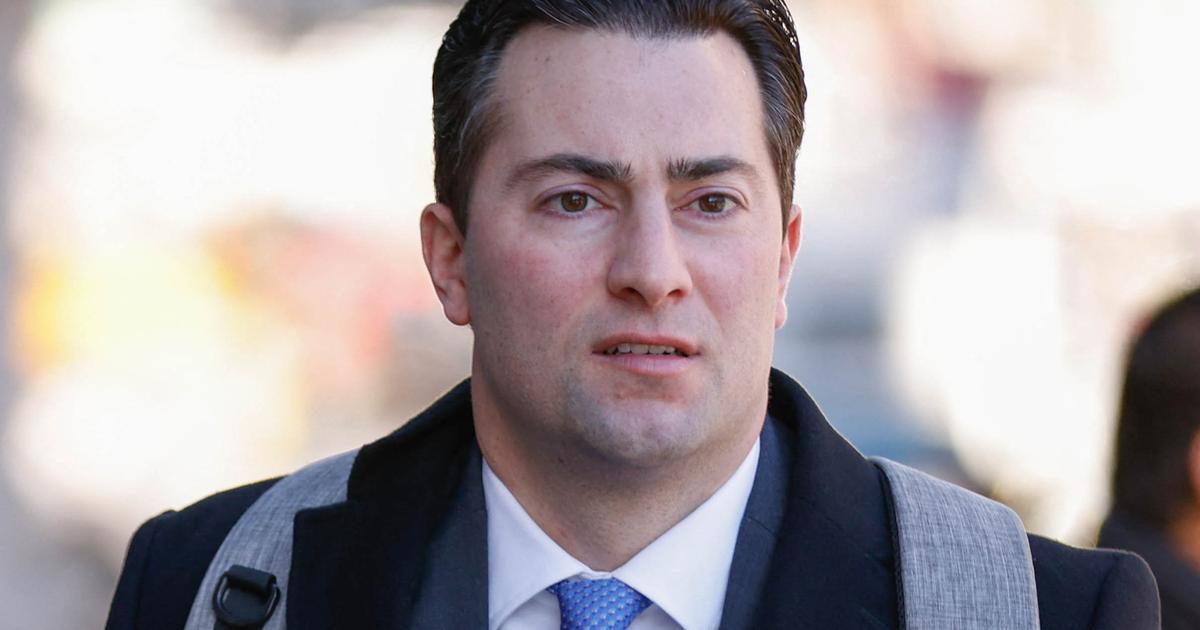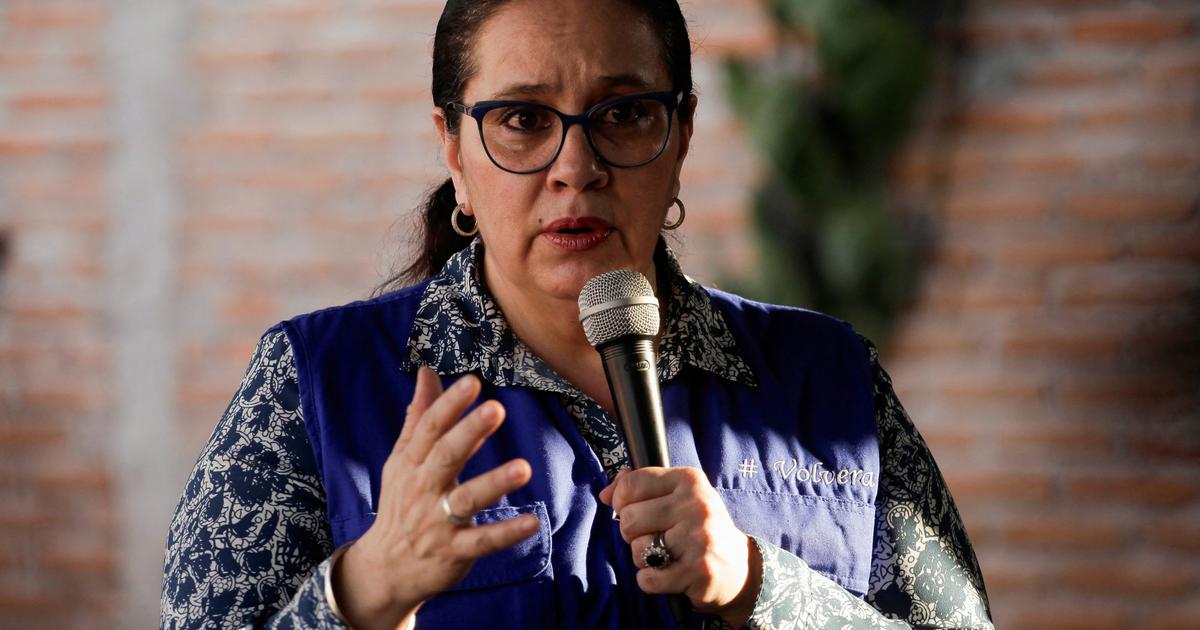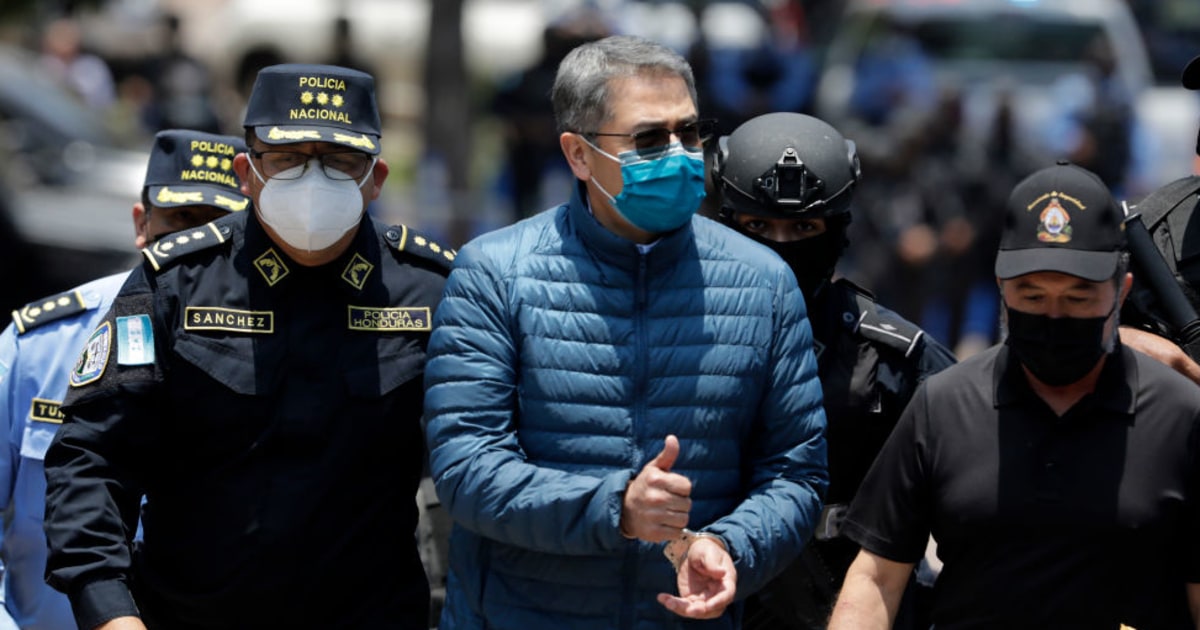Bribes, secret meetings, new testimonies about the collusion between the authorities and drug traffickers in Mexico.
The trial against Genaro García Luna has just gone through its most controversial week, for everything that happened and everything that was said.
The latest remarks triggered the responses of former President Felipe Calderón, former PRI governors Roberto Sandoval and Humberto Moreira, and
El Universal
, one of the best-known newspapers in the country.
The Brooklyn court has been filled with the statements of 25 witnesses who have explained in great detail how the criminals moved with total impunity thanks to the payment of dirty money, how the security institutions failed and how those involved signed a tacit agreement to cover their backs and collect the benefits.
The first-person accounts of drug traffickers and corrupt officials clashed once again with the versions of those who have been singled out and deny everything.
In the midst of the hurricane, the Prosecutor's Office has struggled to present tangible evidence about the accusations and has doubled down on basing its legal strategy on what cooperating witnesses can tell.
The last person they will call to testify will appear next week,
almost three weeks ahead of schedule.
They also announced it just a few days ago.
Explosive accusations and categorical denials
The process in New York against García Luna has put the links between organized crime and the authorities under a microscope.
The former secretary of public safety and the country's former drug czar has sat in the dock for three weeks for siding with and protecting the cartels he vowed to fight.
“When they talk about everything they do, it's shocking, it's even stronger than one thought,” says journalist Ioan Grillo, who has written for more than 20 years about the violence and crime that plagues the country.
“It gives you the feeling of a narco-state in Mexico,” he adds.
Édgar Veytia, one of the most anticipated witnesses in the trial, made headlines because he declared that during the Calderón government the instruction was given to protect the people of Joaquín
El Chapo
Guzmán against other cartels.
The testimony was based on a conversation he allegedly had early in his political career with then-governor Ney González.
"I just came from a very important meeting in Mexico City with Felipe Calderón and Genaro García Luna where they told us that the line was El Chapo," the convict settled, recalling the words that he attributed to González.
"I never negotiated or agreed with criminals," the former president wrote on his social media.
Edgar Veytia declares in the trial against Genaro García Luna in New York, on February 7. JANE ROSENBERG (REUTERS)
The statement was explosive, but it could not be supported by more solid evidence.
Veytia, in the end, did not meet with the then president nor was he present during the alleged investigation.
The former Nayarit prosecutor was with Luis Cárdenas Palomino, García Luna's right-hand man and the main co-defendant in the case.
"He told us that it was El Chapo who we should support," he said.
The witness, sentenced in 2019 to 20 years for ties to drug trafficking, also narrated how he put himself at the service of Juan Francisco Patrón Sánchez, alias
El H2
: murdered, tortured and protected the local boss.
"We didn't stop them, we gave them information so they could escape and evade justice, we covered up the crimes they committed," Veytia admitted, visibly humiliated.
"I strongly deny and reject that my campaign or my person has had a relationship with drug trafficking groups," said former Governor Sandoval, his old friend imprisoned in Mexico since 2021.
Dirty money
The bribery accounts delivered to García Luna are the cornerstone of the case and the basis for accusing him of having ties to organized crime for 20 years.
In addition to indirect testimony, at least two drug lords have testified in court that they were directly involved in delivering irregular payments to the former official.
Sergio Villarreal Barragán,
El Grande
, assured that he has been paid more than a million dollars a month since 2001, when García Luna was head of the Federal Investigation Agency (AFI), created during the Government of Vicente Fox (2000-2006). .
He also described how the chorizos
were assembled .
, the packages with wads of cash, and how they were delivered in black bags after the AFI director was picked up by cartel members in the parking lot of Perisur, a well-known shopping center south of the city.
Arturo Beltrán Leyva's lieutenant even drew a sketch of the safe house where the meetings were held.
After joining Calderón's Cabinet, García Luna delegated the collection to the cartels in Cárdenas Palomino, according to El Grande.
Óscar Nava Valencia, aka
El Lobo
, assured that he paid at least 10 million dollars to García Luna.
El Lobo said, for example, that he paid three million dollars to have a 15-minute meeting with the former secretary in a car wash in Guadalajara.
On another occasion, Nava Valencia, leader of the Milenio Cartel and originally an ally of the Sinaloa Cartel, said that he paid five million dollars in exchange for the then secretary leaking information about a seizure of more than 23 tons of cocaine in Manzanillo in October 2007, the largest drug seizure in the world to that date.
According to his version, García Luna handed over a document to show that the DEA was already following the trail of that shipment and to justify to his Colombian partners that the loss of the merchandise had not been his fault.
Óscar Nava Valencia 'El Lobo' looks at Garcia Luna from the podium, on January 30. JANE ROSENBERG (REUTERS)
But the money was distributed to all kinds of officials and public servants.
Nava Valencia implicated Guillermo Galván Galván, Calderón's Defense Secretary.
Tirso Martínez
The Footballer
he talked about how he had bribed state police commanders and toll booth employees.
Veytia said that she had judges and journalists on her payroll to "save face", as well as the funds that came to the electoral campaigns.
Raúl Arellano, a former federal police officer, said that the high command of the Federal Police at the Mexico City airport received payments, as well as those in charge of the main air terminals, to move narcotics, money and crime weapons.
Israel Ávila, who kept the accounts of the Beltrán Leyva, corroborated it and added the name of Luis Ángel Cabeza de Vaca, former Morelos Security Secretary, to the list.
Cabeza de Vaca was cleared of a drug investigation in 2016.
“We had information that senior officials received bribes from the cartels there,” concluded Miguel Madrigal, a DEA agent who spent seven years in Mexico, referring to a restaurant in one of the United States Embassies.
Tony Wayne, the then ambassador, said that Washington gradually lost confidence in García Luna's Federal Police, although he clarified that he had no conclusive information about the former official's acts of corruption.
Héctor Javier Villarreal, former treasurer of Coahuila, declared that García Luna not only received bribes, he also paid them.
The first former official to speak at the trial said that the former secretary paid 25 million pesos a month to
El Universal
to clean up his image and that of the Ministry of Public Security.
He also assured that the pact was made through the mediation of the then governor Moreira.
And he added that on one occasion, the money came from the Coahuila Ministry of Finance, although the invoice authorized by Villarreal and exhibited in front of the jury did not include the name of García Luna.
The former president of the PRI denied the accusations and said that he had marked differences with the defendant.
The newspaper claimed that he had been smeared without proof.
False seizures, assemblies and operations directed by the narco
The 2007 seizure in Manzanillo has been one of the key episodes in the interrogations.
In addition to El Lobo's testimony, El Grande assured that the cartels prepared fake cocaine with sugar and flour to exchange it for the drug that was seized by the authorities.
Villarreal Barragán assured that this was the destination of the merchandise intercepted in the mega-operation in the Mexican Pacific port.
"After that, Arturo (Beltrán Leyva) was very happy, because he had recovered his cargo almost without loss," said the capo without remorse.
Adrián Ibáñez, a DEA intelligence agent, also spoke of the seizure and during his testimony images of the cache allegedly being burned were shown.
The intention of the Prosecutor's Office was to sow doubt before the jury that the fight against the cartels was simulated in public and in private,
Another matter that received attention was the alleged
uprising
suffered by García Luna in 2008, at the hands of Arturo Beltrán Leyva's collaborators.
The episode, denied on each occasion by the defendant in the past, occurred in Morelos without the ex-secretary's escort putting up any resistance, Villarreal Barragán said.
"In Mexico everything is possible, there is a lot of corruption," settled El Grande.
Harold Poveda
El Conejo
, a Colombian drug trafficker who became one of Beltrán Leyva's closest men
,
said he convinced his former boss not to kill the official.
"By God, how are you going to do that, then if we are going to get into trouble, the government is going to come with everything," rebuked El Conejo, who was not an eyewitness to the kidnapping.
Francisco Cañedo answers questions from César de Castro, García Luna's lawyer, on February 6. JANE ROSENBERG (REUTERS)
Francisco Cañedo, a retired ministerial agent, said he saw García Luna meeting in October 2008 with La Barbie and Beltrán Leyva on a highway between Tepoztlán and Morelos.
“I was left trembling,” Cañedo admitted.
The former police officer assured that he shared the information with the then deputy Layda Sansores, current governor of Campeche and that he leaked a report that she wrote for the Union Congress to the media about the meeting.
From the details that Cañedo gave, it is inferred that it was not the episode of the kidnapping.
He did say that later he interviewed some of the secretary's bodyguards, who told him that they had been disarmed and subdued.
El Grande, El Conejo and El Lobo also gave similar accounts of how the Beltrán Leyva group planned and carried out the capture of Jesús
El Rey
Zambada, their former ally and later rival.
Brutalized by the capture of his brother Alfredo de él, Arturo Beltrán insisted on bringing down El Rey, the brother of Ismael
El Mayo.
Zambada, founder of the Sinaloa Cartel.
"There were two attempts, in the first we gave the information to the Army, but they sold it to the people of El Rey," said El Grande, in another testimony about the alleged corruption that prevails in the forces of order.
In the second, Villarreal Barragán, a corrupt ex-policeman who made the leap to drug trafficking, put on his official agent uniform again along with other gunmen.
"I was part of the operation," acknowledged Villarreal Barragán.
They all declared that those who had brought down Zambada were his rivals.
El Conejo added, for example, that a journalist was paid to spread the word about the arrest, although he did not specify who.
Poveda, a capo who never had direct contact with García Luna, accused that he was kidnapped and tortured some 18 hours before being brought before the authorities and the media.
“Are you The Rabbit, son of a bitch?
Because you already screwed yourself”.
His testimony was the only one who put on the table the assemblies in charge of the agencies directed by García Luna, an old accusation in Mexico that until now has been relegated from the story that the Prosecutor's Office has tried to show the jury.
An unexpected turn
"The strategy in general has been to put many witnesses with strong and impressive testimonies, speaking that García Luna is guilty," summarizes Grillo about the plan that the Prosecutor's Office has followed.
The repetition of these stories does not seem like a bad tactic in front of the jury, 12 citizens of New York who have no further context about the defendant or the implications of the case on the other side of the border.
During the last three weeks, the members of the panel have been exposed to an intensive course on the narco and its stories in the voice of the protagonists.
Unlike much of what is written and published in Mexico, the British author does not ignore the impact that these statements can have on the jury.
And they are the ones who have the last word on the guilt or innocence of the accused.
Héctor Javier Villarreal, former treasurer of Coahuila, during interrogation by the Prosecutor's Office, on February 6. JANE ROSENBERG (REUTERS)
Almost as controversial as each statement in the 10 hearings that the trial has had has been the commitment of the Prosecutor's Office to build the case almost entirely around the statements of cooperators.
“I thought that to go to trial against García Luna, against a former official of this level, they would have to have a
smoking gun
”, says the writer, who attended the first leg of the hearings in New York.
Grillo refers to what is also called "silver bullet" or decisive and incontrovertible evidence.
"It has been a disappointment that there was not something else, such as recordings," he settles.
The door for the presentation of more evidence has not closed, but it has narrowed: prosecutors announced this week that they expect to call their last witness in the coming days.
“I don't think it's a bad strategy, perhaps they feel that they have already raised their case or realized that the judge wants everything to be shorter,” he comments.
"If García Luna is not convicted, it would be a complete failure of the Prosecutor's Office and perhaps they would be more careful to take other political cases."
However, the abrupt decision of the prosecutors not to call more witnesses made a deep impression on a country that hoped to continue with the testimony of the drug trafficker that the trial has become.
The process against García Luna came with the banner of being the great exorcism of the doubts and suspicions that have hovered over power in Mexico in the last two decades.
Under that parameter, however, it will be almost impossible to meet those expectations.
Because the judge has greatly limited the materials and statements that reach the court.
Because in the equation of the Prosecutor's Office to convince the jury the interest in the case on the other side of the border does not have any weight, although it is difficult to accept it.
Because the cost of these processes being carried out 3,000 kilometers from the country's limits is playing as a visitor and under the rules of the hosts.
“It's sad that Mexico can't make these lawsuits,” Grillo says.
The judicial process enters a decisive phase as of next week with the closure of the interrogations, the possibility of final arguments being given and a verdict for which there is no scheduled date, but which is getting closer.
subscribe here
to the EL PAÍS México
newsletter
and receive all the key information on current affairs in this country


/cloudfront-eu-central-1.images.arcpublishing.com/prisa/72V5ILYZORGNLHVFBL5EFHNU6Q)






